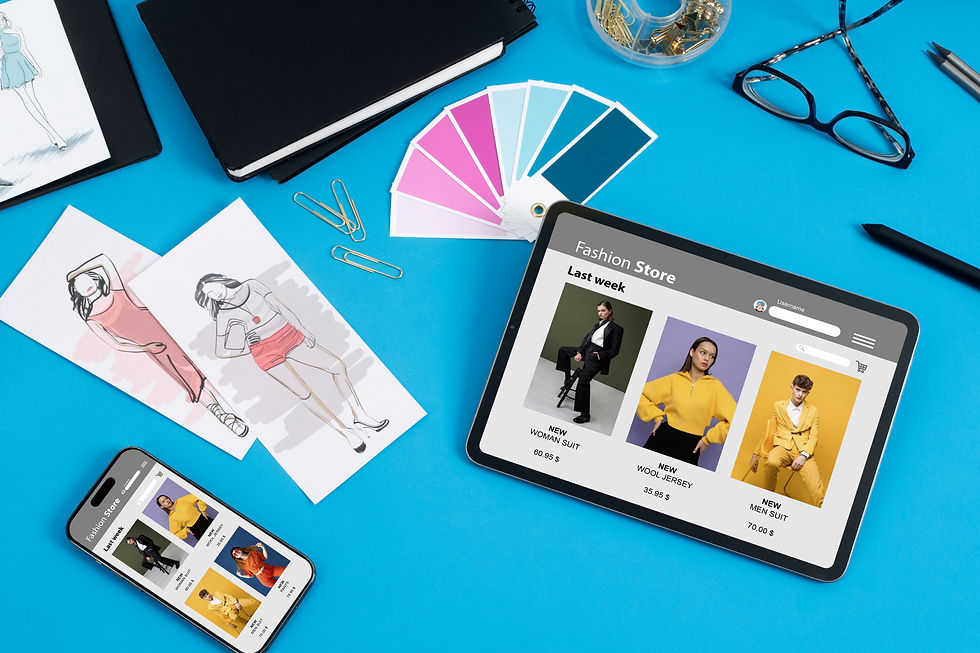B2B Fashion Portal — All You Need to Know
- Admin Qart
- Oct 8
- 2 min read
In the wholesale fashion industry, success is determined by speed and clarity. Seasonal collections, international buyers and complex supply chains require a digital ecosystem where suppliers, retailers and brands work together seamlessly. Spreadsheets and emails are no longer enough. This is exactly what a B2B fashion portal does: it consolidates partner interactions, inventory visibility and order booking onto a single platform.

What a B2B Fashion Portal Offers
A B2B portal for the fashion industry is more than software. It’s the backbone for fashion and apparel brands, connecting every stage of the wholesale journey. From digital asset management and virtual showrooms to booking process automation, a portal keeps collections, pricing and buyer communications organized and accessible in real time.
Unlike generic ERP or CRM systems, a b2b fashion platform is built for seasonal cycles, global distribution and multi-level pricing, giving brands control and transparency across their supply chain management.
Why Brands Adopt Digital Portals
Wholesale is no longer linear. Brands need speed, accuracy and flexibility. A B2B portal helps by:
Centralizing operations — from tradeshow management to online portals.
Speeding up order cycles — retailers use a retailer app to browse, select and confirm orders instantly.
Boosting visibility — real-time dashboards track stock, pricing and order status.
Reducing errors — automated workflows replace manual approvals and miscommunications.
Brands using a B2B portal can focus on growth and strategy, not administrative overhead.
How It Works
A B2B fashion platform transforms wholesale processes into a smooth digital workflow:
Collection Uploads & Digital Assets – Seasonal collections and line sheets are stored centrally.
Buyer Access & Virtual Showrooms – Retailers explore assortments and place orders.
Order Booking & Automation – Orders are confirmed and processed through booking process automation.
Insights & Analytics – AI-driven data informs trends, demand planning and inventory allocation.
This keeps teams aligned and operations efficient.
Core Features
Unified Catalog & Order Management – One source for products, pricing and stock.
Automation Workflows – Cut manual approvals and reduce errors.
Buyer-Centric Tools – Retailer apps and virtual showrooms streamline buying.
Digital Asset Management – Centralized visual assets and line sheets.
AI Insights – Anticipate demand, optimize stock, and identify growth opportunities.
These features give fashion and apparel brands the agility to scale wholesale operations efficiently.
Signs You’re Ready
A B2B portal is a fit if your brand:
Relies on spreadsheets or emails for orders.
Experiences delays or miscommunication with retailers.
Lacks real-time visibility into stock or pricing.
Centralizing operations eliminates inefficiencies and frees the teams to focus on growth.
Looking Ahead
The wholesale industry will be digital and connected in the future. To establish scalable and smooth operations, B2B fashion portals combine digital asset management, virtual showrooms, tradeshow management and AI insights.
It makes strategic sense for fashion and apparel brands to implement a business-to-business portal. Stronger retailer relationships, quicker decision-making, and improved visibility.




Comments